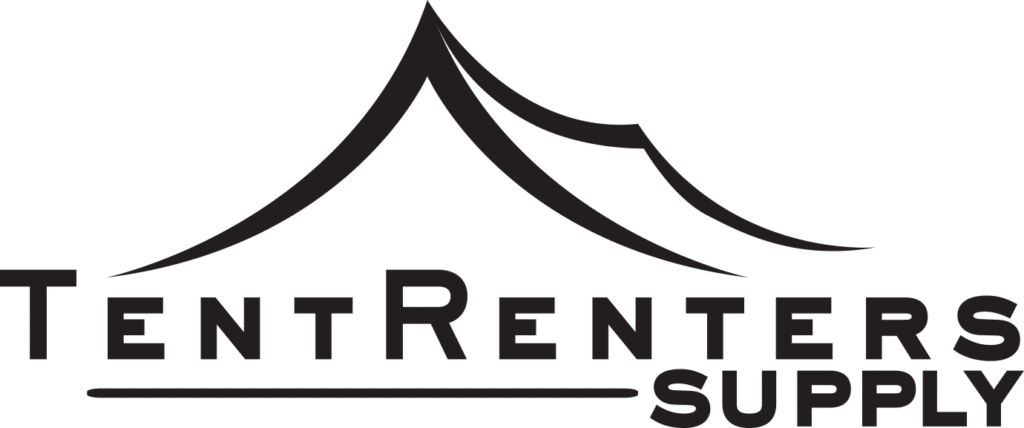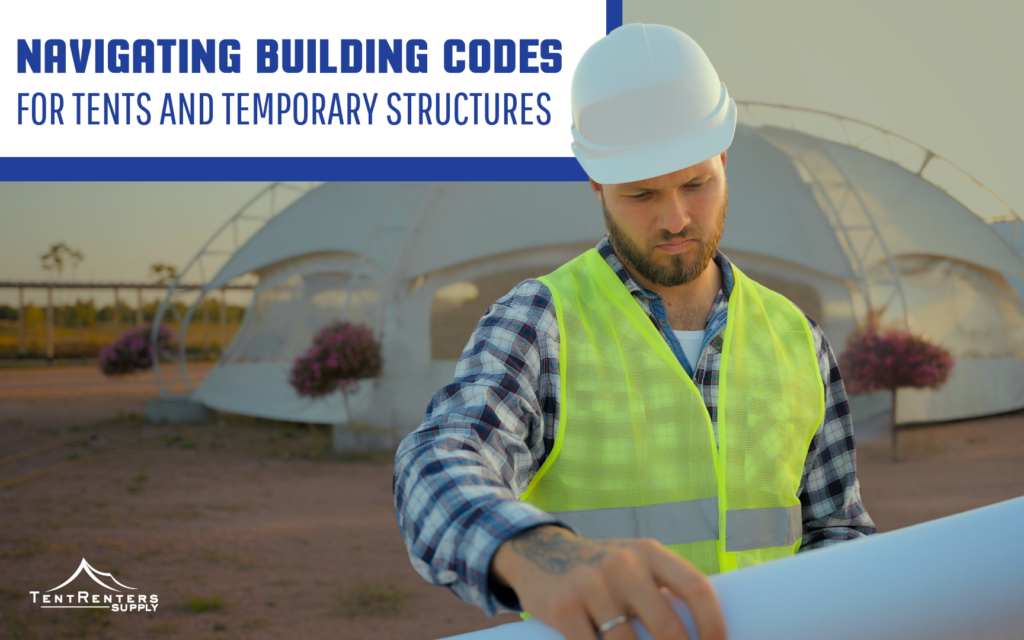Event Tents, Events, Tent Basics, Tent Safety
Navigating Building Codes for Tents and Temporary Structures
Throwing a large event that uses tents or temporary structures? While these can make any event adaptable and functional, ensuring they meet safety standards is non-negotiable.
From structural integrity to fire safety, understanding and complying with relevant building codes is essential for event planners and site managers.
This guide breaks down the complexities of building codes for tents and temporary structures, helping you navigate local regulations, meet safety requirements, and ensure that your event runs smoothly.
Here’s everything you need to know, from key regulations to common pitfalls and actionable steps.
Understanding Building Codes for Tents and Temporary Structures
Building codes for tents exist to prioritize public safety, ensuring temporary structures can handle various conditions, such as wind loads, fire risks, and accessibility. These codes are typically informed by national standards like the International Building Code (IBC), the International Fire Code (IFC), and guidelines set by organizations such as the American Society of Civil Engineers (ASCE).
When planning an event, it’s vital to understand the specific codes that apply to tents of certain sizes and uses. For example, larger structures typically face stricter regulatory compliance than smaller pop-up tents.
Why Building Codes Matter for Your Event
Failing to adhere to building codes can result in permit denial, expensive penalties, or even hazardous consequences at your event. Knowing the rules ahead of time gives you peace of mind and helps you avoid logistical surprises during setup.
The Role of ASCE7 in Tent Safety and Compliance
Among the critical resources for building codes is ASCE7, a standard from the American Society of Civil Engineers that defines minimum design loads for buildings and other structures, including tents.
Why ASCE7 Matters
ASCE7 provides detailed calculations for wind, snow, and seismic loads to ensure that temporary structures like tents can endure different environmental forces. Event planners and tent suppliers rely on this standard to select materials and design structures safely.
Key Highlights from ASCE7 for Tent Compliance:
- Wind Rating Calculations: Ensures the stability of the tent against local wind conditions.
- Snow Load Requirements: Applies to events in colder climates to prevent roof collapses.
- Seismic Requirements (if applicable): Necessary for events in regions with earthquake risks.
Key Safety and Structural Guidelines for Temporary Event Tents
Whether you’re hosting a wedding, trade show, or festival, ensuring the safety of tents is paramount. Below are critical safety and structural tips to keep in mind.
1. Wind Load Calculations
You’ll want to know the specific wind load capacity for your event tents. Factors include local climates and terrain, particularly in windy or coastal regions. Compliance with ASCE7 wind ratings mitigates collapse risks during heavy gusts.
2. Fire Safety Regulations
The National Fire Protection Association (NFPA) provides guidelines on fire safety codes, such as fire-retardant fabrics for tents, emergency lighting, and maintaining sufficient fire exits. Be sure to prominently display “No Smoking” signs if required for compliance.
3. Egress and Accessibility Codes
Tents must meet standards for accessibility to ensure all individuals, including those with disabilities, can safely enter and exit. Key considerations include adequately sized doorways, unobstructed egress paths, and compliance with Americans with Disabilities Act (ADA) guidelines.
4. Structural Engineering
Using high-quality materials and professional installation is crucial. Tents must often be certified by licensed engineers to validate structural integrity before receiving local permits.
Navigating Local Codes, Permits, and Compliance
Building codes can vary between jurisdictions, making it essential to check with your local authority before installation.
Steps to Ensure Compliance:
- Check Local Ordinances: Review your city or county’s unique regulations regarding tent installations.
- Obtain Necessary Permits: Permits are typically required for larger tents exceeding 400 square feet.
- Consult Professionals: Collaborate with structural engineers familiar with temporary structure regulations.
- Schedule Inspections: Local inspectors may need to verify tent installation before use.
Understanding these steps ensures smoother communication with officials and avoids last-minute fines or shutdowns.
Common Challenges in Meeting Tent Building Codes
Navigating building codes for tents is not without its hurdles. Here are common challenges and practical ways to address them.
Challenge 1: Interpreting Vague Local Codes
Solution: Research examples from neighboring regions or hire a compliance consultant for clarity.
Challenge 2: Environmental Conditions
High winds or unpredictable weather can demand more rigorous setup.
Solution: Factor climate risks into wind-load calculations and use wind-rated tents.
Challenge 3: Fire-Safety Equipment Costs
Adding additional fire exits, signs, and extinguishers can feel draining on your budget.
Solution: Invest in reusable fire equipment for long-term savings, and explore local grants for community events.
Why Adhering to Tent Building Codes is Non-Negotiable
Adhering to building codes for tents isn’t just a matter of compliance—it’s about protecting attendees and providing a positive event experience.
Failing to comply can result in:
- Structural collapse that poses significant safety risks.
- Legal liabilities and increased insurance premiums.
- Event cancellations, ruining reputations for event planners.
Proactively investing in compliant tents demonstrates professionalism and a commitment to safety, giving you a competitive edge in the event-planning industry.
How Event Planners Can Simplify Code Compliance
Here are three effective strategies for event planners to streamline code compliance and eliminate unnecessary stress.
- Partner with Trusted Suppliers: Work with tent providers who specialize in regulation-compliant installations.
- Always Request Certifications: Ask tent suppliers for wind-load certifications, fire-safety verifications, and engineer-stamped structural documents.
- Stay Educated: Attend industry conferences to stay up-to-date on changing regulations and best practices.
Partner with Tent Renters Supply for Safe and Compliant Events
At Tent Renters Supply, we understand that meeting building codes for temporary event structures isn’t just important—it’s essential to delivering professional, safe, and successful events. With our expertise in engineering and high-quality tent production, we ensure your event structures are not only functional but fully compliant and secure, giving your attendees the comfort and safety they deserve.
Navigating regulations can be complex, but we’re here to simplify the process. From permit applications to structural requirements and fire-safety compliance, our team has the knowledge to handle it all, so you can focus on creating a memorable event.
Make your next event unforgettable with secure, compliant structures designed by experts. Call Tent Renters Supply today at (800) 865-5064 to get your custom quote started!

